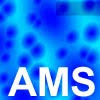 Introduction Back in the 2004 I replicated the ARP 4075 VCF module using exactly the same design and sold a few PCB's to customers as the AM4075. I also licensed the design to Bananalogue, and you can still buy these modules on eBay all these years later. The licensing deal enabled me to buy a new PC and greatly speeded up my design work, which is all done in Eagle CAD. Whilst the filter sounded good, I wanted to improve and simplfy the design when I started up AMSynths. I also wanted to use slider potentiometers and introduce a HPF - the idea of a Special Edition version (SE) was born.
Introduction Back in the 2004 I replicated the ARP 4075 VCF module using exactly the same design and sold a few PCB's to customers as the AM4075. I also licensed the design to Bananalogue, and you can still buy these modules on eBay all these years later. The licensing deal enabled me to buy a new PC and greatly speeded up my design work, which is all done in Eagle CAD. Whilst the filter sounded good, I wanted to improve and simplfy the design when I started up AMSynths. I also wanted to use slider potentiometers and introduce a HPF - the idea of a Special Edition version (SE) was born. Athena The AM8075SE filter is the first module to be launched as part of a complete modular analog monosynth. VCO, VCA, ADSR etc will all follow. Athena is the greek god of inspiration.
The Special Edition At the end of 2011 I had a new prototype on the test bench, implemented with matched transistor pairs, reworked LM3900 power supply and cut out the rejection trimming circuit as this was no longer needed with matched transistors. Op Amp buffers before and after the filter core were added, as the one complaint from the original AM4075 was that it was rather quiet as it had no buffer circuits and worked best on 10V audio signals.
I added a 1-pole high pass filter based on the classic Roland OTA circuit rather than the awful design in the Odyssey. Slider potentiometers are used through out and after some adjustments to work on 12V power the VCF sounds fantastic! The matched arrays make a great improvement along with using high quality filter capacitors. The slider caps are the same as in the Odyssey Mark 1 and 2, and they will appear through out the Athena synthesizer (and yes I do have pink caps!).
The moudle went into production in July 2012 and the first batch sold out quickly. Further batches will be manufactured, as there are no rare parts to find.
AMSynths Panel The panel is professionally manufactured in 1.6mm thick alumnium in Germany with black lettering. The module is EuroRack sized and fully compatible with many other EuroRack modular synthesizer systems such as Doepfer.
SoundCloud Demo
More Information
Visit the AM8071 web page on my web site for more information.
http://www.amsynthstore.co.uk/AM8075SE_Athena_VCF/p1461448_6753797.aspx










